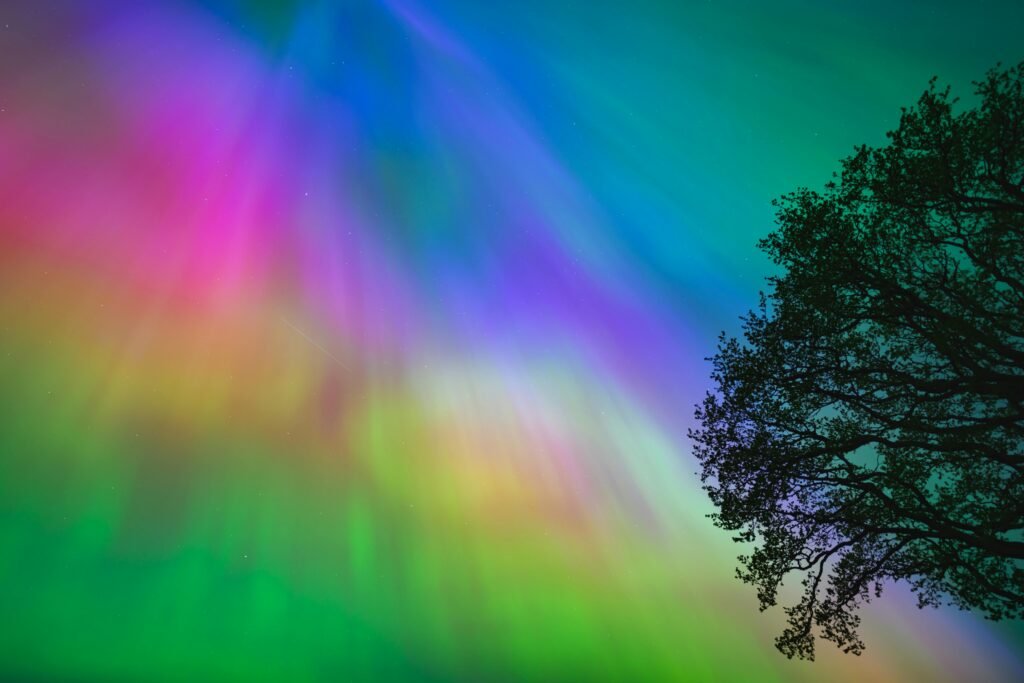Welcome to the world of architecture where lighting features can truly transform a building’s aesthetics and overall design. By strategically incorporating stunning lighting fixtures, architects are able to create a captivating atmosphere that not only enhances the beauty of a structure but also emphasizes its unique architectural elements. From highlighting intricate details to accentuating focal points, lighting has the power to elevate the visual impact of any building. In this article, we will explore the ways in which architects are enhancing architecture with stunning lighting features, turning ordinary structures into works of art.
Enhancing Architecture with Stunning Lighting Features
Have you ever walked by a building at night and marveled at how beautifully it was illuminated by lights? Lighting can truly transform the appearance of architecture, highlighting its unique features and creating a captivating visual experience. In this article, we will explore the ways in which stunning lighting features can enhance architecture and elevate the overall aesthetic appeal of a space.

The Impact of Lighting on Architecture
Imagine a sleek, modern building with clean lines and innovative design. Now, picture that same building at night, bathed in soft, warm light that accentuates its contours and casts dramatic shadows. The difference is striking, isn’t it? Lighting has the power to completely change the way we perceive architecture, turning an ordinary structure into a work of art.
When done thoughtfully and creatively, lighting can bring out the best in architectural features, drawing attention to key elements such as arches, columns, and facades. It can create a sense of depth and dimension, making a building appear more dynamic and visually interesting. By strategically illuminating different areas of a structure, lighting can also guide the viewer’s eye and create focal points that capture attention.
Types of Lighting Fixtures for Architectural Enhancement
There are various types of lighting fixtures that can be used to enhance architecture and create stunning visual effects. Each type has its own unique characteristics and applications, offering different ways to illuminate and accentuate architectural elements.
1. Floodlights
Floodlights are powerful fixtures that emit a broad beam of light, making them ideal for illuminating large surfaces such as building facades or walls. They can create a wash of light that highlights the overall shape and texture of a structure, bringing out its architectural details and creating a dramatic effect.
2. Wall Washers
Wall washers are fixtures that are specifically designed to wash light up or down a vertical surface, such as a wall or column. They can be used to create a soft, diffused glow that gently accents the texture of the surface, adding depth and visual interest to the architecture.
3. Spotlights
Spotlights are focused fixtures that produce a narrow, concentrated beam of light. They are ideal for highlighting specific architectural features, such as sculptures, intricate carvings, or decorative elements. Spotlights can create a sense of drama and draw attention to key details, adding a touch of sophistication to the design.

Creating a Lighting Plan for Architectural Enhancement
To effectively enhance architecture with lighting features, it is important to create a well-thought-out lighting plan that takes into account the specific needs and characteristics of the space. A lighting plan should address the following key aspects:
1. Identify Key Architectural Features
Start by identifying the key architectural features that you want to highlight or accentuate with lighting. Consider elements such as entrances, windows, columns, and decorative elements that contribute to the overall design of the building. By pinpointing these features, you can create a lighting design that enhances their visual impact and creates a cohesive look.
2. Determine Lighting Goals
Think about the goals you want to achieve with your lighting design. Do you want to create a welcoming ambiance, emphasize certain design elements, or draw attention to specific areas of the building? By defining your lighting goals, you can tailor your design to meet your aesthetic and functional objectives, ensuring that the lighting enhances the overall look and feel of the space.
3. Select Appropriate Lighting Fixtures
Choose lighting fixtures that are well-suited to the architectural style and characteristics of the building. Consider factors such as scale, brightness, color temperature, and beam angle when selecting fixtures, and ensure that they complement the overall design aesthetic. By selecting the right fixtures, you can achieve the desired lighting effects and create a cohesive visual experience.
4. Create a Lighting Layout
Develop a lighting layout that strategically places fixtures to highlight key architectural features and create visual interest. Consider the placement of fixtures, the angle of light, and the intensity of illumination to achieve the desired effects. By carefully planning the layout, you can create a dynamic and visually appealing lighting design that enhances the architectural beauty of the space.
Case Studies: Stunning Lighting Features in Architecture
To inspire and spark creativity, let’s take a look at some real-life examples of stunning lighting features in architecture. These case studies showcase the power of lighting to transform and enhance architectural design, creating captivating visual experiences that leave a lasting impression on viewers.
Case Study 1: The Guggenheim Museum, Bilbao
The Guggenheim Museum in Bilbao, Spain, is renowned for its iconic architecture and innovative design. The building’s curved, titanium-clad facade is brought to life at night by a dynamic lighting scheme that highlights its sculptural form and futuristic aesthetic. Carefully placed floodlights and spotlights accentuate the building’s unique shape and texture, creating a striking visual effect that draws visitors in and enhances their experience.
Case Study 2: The Sydney Opera House, Australia
The Sydney Opera House is a modern architectural masterpiece that is instantly recognizable around the world. At night, the iconic sails of the building are illuminated by a series of custom-designed lighting fixtures that wash light across the surface, creating a mesmerizing display of color and movement. The lighting design emphasizes the building’s striking silhouette and intricate details, transforming it into a breathtaking work of art that captivates viewers and enhances the waterfront setting.

Tips for Implementing Stunning Lighting Features in Architecture
Now that you understand the impact of lighting on architecture and have explored different types of lighting fixtures and design strategies, here are some practical tips for implementing stunning lighting features in your own architectural projects:
1. Work with a Lighting Designer
Consider collaborating with a lighting designer who specializes in architectural lighting design. A professional designer can help you create a custom lighting plan that enhances the architectural features of your building and creates a visually stunning effect. They can offer valuable insight, expertise, and creative solutions that will take your lighting design to the next level.
2. Experiment with Color and Texture
Don’t be afraid to experiment with different colors, textures, and lighting effects to create a unique and dynamic lighting design. Colors can evoke different moods and atmospheres, while textures can add depth and visual interest to the architecture. By playing with these elements, you can create a one-of-a-kind lighting display that enhances the overall aesthetic appeal of the space.
3. Consider Energy Efficiency
When selecting lighting fixtures for your architectural project, consider energy efficiency and sustainability. Choose LED fixtures that are energy-efficient, long-lasting, and environmentally friendly, reducing energy consumption and minimizing your carbon footprint. By incorporating sustainable lighting solutions, you can create a beautiful and eco-friendly lighting design that benefits both the environment and your budget.
Conclusion
Lighting plays a crucial role in enhancing architecture and creating stunning visual effects that elevate the overall aesthetic appeal of a space. By strategically incorporating lighting fixtures, design strategies, and techniques, you can highlight architectural features, create visual interest, and transform a building into a work of art. Whether you’re illuminating a modern skyscraper, a historic landmark, or a residential property, stunning lighting features can make a lasting impression and enhance the beauty of the architecture. So, next time you walk by a beautifully lit building, take a moment to appreciate the transformative power of lighting in architecture.



